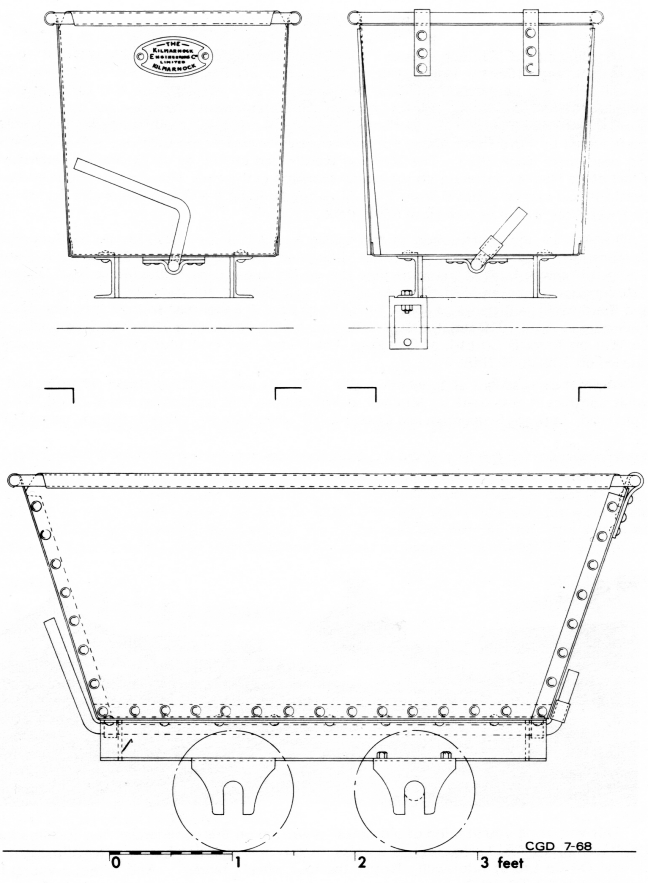
| THE INDUSTRIAL RAILWAY RECORD |
© FEBRUARY 1970 |
NARROW GAUGE WAGONS
| NENTHEAD COLLlERY |
C. G. DOWN |
There can be few places more attractive than the moors of Northumberland and Durham to see industrial railways in operation. True, the remaining systems are predominantly underground and are not loco worked, but almost every hillside seems to be pockmarked with old workings and traces of the railways that served them. Coal, lead and fluorspar are the minerals generally worked, and it was a closed driftmine colliery near Nenthead (Grid Reference 767451) that I found the wagon which provides the subject of this article.
At most of the remaining collieries in the area, small ex-National Coal Board tubs are used, but this mine was different. On its 1ft 7½in gauge tracks (a fairly common gauge in the area. the rolling stock comprised wooden bottom-door tubs and Hudson U-skips, examples of which lay about the old tip in profusion. There was also one remaining example of an end-door wagon, built by the Kilmarnock Engineering Co. Ltd.
This wagon was of simple steel construction and the drawings show its main features. The frame, built of 4in x 2in channel, 3ft 8in long, was of riveted construction. The wheelbase was 1ft 8in but, since the wheels were missing, I don't know their design. The body was of 1/8in plate wrapped around a one inch diameter forming rod at the top, the side, end and floor sheets being joined by rivets on a 1½in overlap inside the side sheets. At the door end there was a 1½in x ¼in reinforcing strip on each side. The floor sheet was riveted to the frame through similar 1½in strips. As can be seen, the door was hinged on the top forming rod, and held in position by a catch operated from the other end of the wagon.

Apart from the fact that the mine closed in about 1966, I know nothing of the history of the wagon or, indeed, of the firm who built it. Any additional information will be greatly welcomed.
|
|
|
*************************************************************************
For the record . . .
UNDERGROUND HAULAGE IN BELGlAN MINES.
- "Steam locomotives tried in several collieries have been abandoned owing to the difficulty occasioned by the exhaust steam. . . . .while if the mine is fiery, engines with a furnace cannot be used, so that there only remain fireless locomotives, which have met with but slight favour. Electric locomotives with Trolley [have] not been adopted in Belgium, although [used] on a large scale in the French northern coalfields. [Three] Electric locomotives with Accumulators [are in use on] a road, 1,575m long, connecting the Chaumonceau and Bellevue shafts of the Amercoeur Colliery, Charleroi. The flange rails . . . are laid to a gauge of 50cm on light timber sleepers . . . It is only quite lately that a locomotive working with petroleum has been used in fiery mines but now the Otto firm at Deutz, near Cologne, makes a type of locomotive working with benzine that appears to unite all the necessary conditions of safety and economical working. . . . . These locomotives have been running for more than a year without having required any repairs. The cost is only 35% the cost . . . . with accumulator locomotives and 41% that with trolley locomotives." ("Colliery Guardian," 1st December 1899, quoting from "Annales des Mines de Belgique." - KPP)